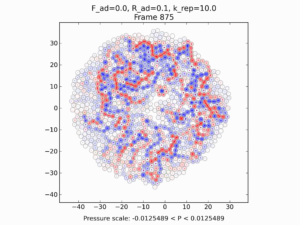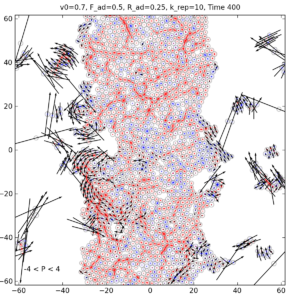Stresses in collections of motile particles

While the density and velocity fields in active matter systems have received a large amount of attention, there has been to date no systematic study of interparticle stresses. Recently, a number of groups have started to investigate the collective properties of confluent monolayers of epithelial and endothelial cells [1].
Within the ‘cell on a gel’ setup where the cells are plated on top of a transparent elastic gel seeded with microbeads, the cell-substrate and cell-cell stresses can be obtained via force traction microscopy. It is clear that both at the cell as well as at the collective level, the overall stress transferred to the substrate is contractile.

We are now using models of self-propelled active particles to study these questions. The model includes both steric effects and interparticle adhesion. In addition, we exploring various modifications of the aligning interaction to identify a model appropriate to confluent cells layers that often do not show aligned block migration.
[1] L. Petitjean, M. Reffay, E. Grasland-Mongrain, M. Poujade, B. Ladoux, A. Buguin, and P. Silberzan, Biophys. J. 98, 1790 (2010)
[2] X. Trepat et al., Nature Physics 5, 426 (2009)